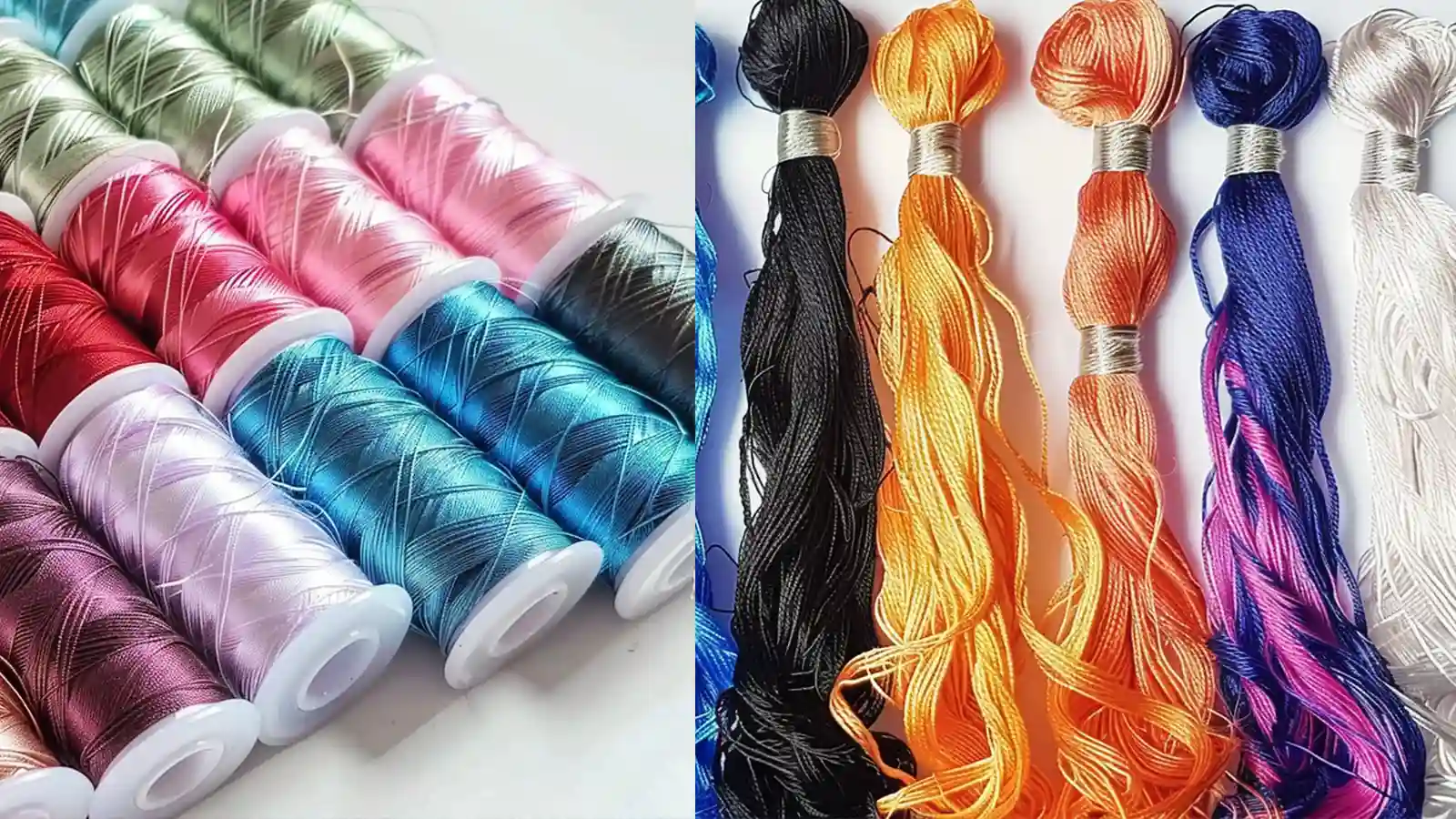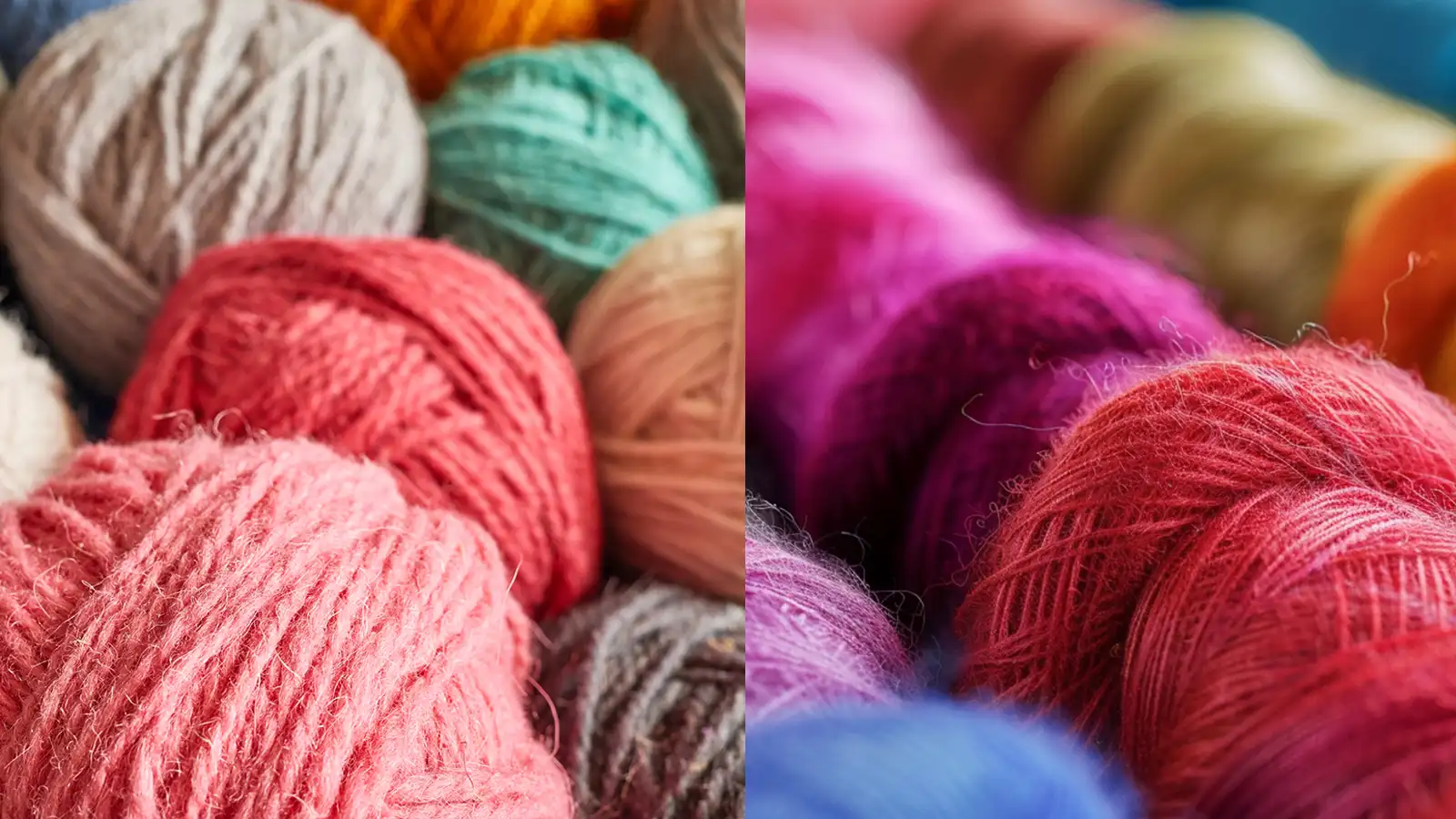As you prepare to start your embroidery work, you’re faced with a crucial decision: what thread to use. The type of thread you choose can drastically impact the final outcome of your design. With so many options available, it can be overwhelming. Cotton, silk, and wool threads each have their own unique characteristics, and specialty threads offer additional possibilities. But how do you decide which one is right for your project? Consider the fabric you’re using, the complexity you want, and the overall look you want.
Key Takeaways
- Prioritize colorfast threads that resist fading and shrinking for long-lasting embroidery.
- Consider the fabric type when selecting threads, as some threads work better with specific fabrics.
- Choose threads that match the desired texture and visibility. Use finer threads for delicate work and thicker threads for bolder designs.
- Silk threads enhance intricate designs, while wool threads add depth and dimension to embroidery.
- Select threads based on the desired sheen.
Cotton Embroidery Thread

As you explore cotton threads, you’ll discover the versatility of six-stranded cotton and the luxurious shine of Perle cotton.
Six-Stranded Cotton Thread
Choosing the right six-stranded cotton thread can make all the difference in achieving the desired stitch appearance and texture.
Six stranded cotton is a versatile thread suitable for various hand embroidery projects. This cotton thread type can be easily separated into individual strands. With a wide range of colors to choose from, six-stranded cotton is perfect for beginners and experienced embroiderers alike.
Perle Cotton Thread
With over 300 vibrant colors to choose from, you can unleash your creativity with pearl cotton. It is a versatile and smooth-finish thread ideal for adding intricate details and texture to your embroidery projects.
This non-divisible thread is popular for its shine and texture, making it perfect for surface embroidery. Available in various weights like #3, #5, #8, and #12, Perle cotton offers versatility in stitch thickness for different projects.
Silk Embroidery Thread

As you explore the world of silk embroidery threads, you’ll discover two main types: spun silk and filament silk.
Spun Silk Thread
You’ll find that spun silk threads, renowned for their exceptional softness, are an excellent choice. Their luxurious feel and subtle sheen will elevate your embroidery projects, making them truly special. With their softness and delicate appearance, spun silk threads are perfect for creating intricate, detailed embroidery work.
Filament Silk Thread
Filament silk threads are prized for their exceptional smoothness. With a luxurious sheen, they’re the great choice for achieving fine lines and delicate stitching. This high-quality thread offers a smooth, even weave, making it perfect for detailed embroidery work.
When working with filament silk threads, you can expect a high-quality finish and exquisite results in your projects. Whether you’re creating intricate designs or detailed embroidery, filament silk threads will elevate your hand embroidery projects.
Wool Embroidery Thread

As you explore the world of wool embroidery floss, you’ll discover the unique benefits of Merino wool. You’ll also want to consider Mohair wool, a popular choice for creating fluffy effects and ensuring durability in your designs.
Merino Wool Thread
Merino wool threads are great for creating cozy and luxurious embroidery designs. They are soft and have a smooth finish, adding elegance to your needlework. These wool embroidery threads are ideal for filling larger areas quickly while providing a soft and plush appearance.
Merino wool threads offer a rich and tactile finish, adding depth and interest to your embroidery work. With their exceptional softness, they’re perfect for creating cozy and luxurious designs that will make your needlework stand out.
Mohair Wool Thread
Crafting captivating embroidery designs becomes effortless when you work with mohair wool threads. This type of thread produces fluffy effects, adds durability, and brings a soft, smooth finish. As you stitch, you’ll notice how mohair wool adds depth and dimension to your designs, making them truly stand out.
The plush, fluffy nature of mohair wool makes it ideal for filling larger areas quickly and efficiently. Its soft, smooth finish creates a unique visual and tactile experience. With mohair wool, you can create textured designs that invite touch and exploration.
Specialty Thread

As you explore the world of specialty threads, you’ll discover a range of options that can elevate your embroidery pieces
Metallic Embroidery Thread
Metallic threads add luxury to embroidery by bringing a sparkling shine. It is perfect for highlighting special details that should stand out. You can create stunning embellishments that catch the eye with these threads. These threads are often blended with rayon or polyester for added durability.
To get the most out of your metallic threads, use them for short lengths to maintain their shine and prevent twisting together. Mixing them with regular embroidery floss can also make them easier to handle.
With metallic threads, you can add a touch of glamour to your embroidery work.
Variegated Embroidery Thread
Variegated embroidery threads make it easy to add dynamic color variations to your projects without needing to change thread often. These specialty threads feature multiple colors in a single strand, creating unique and blended color effects.
With variegated threads, you can add visual interest, shading, and dimension to your designs without the need for color changes. They come in a variety of color combinations, from subtle transitions to bold contrasts. Use them for both hand embroidery and machine embroidery to achieve stunning and intricate patterns.
Monofilament Embroidery Thread
You can achieve a nearly invisible stitching effect with monofilament embroidery thread. It is a specialty thread that blends seamlessly into delicate fabrics like tulle, organza, or lace. This transparent thread is made from a single continuous filament. It offers superior blending abilities that create a subtle, understated look.
Available in clear or smoke colors, monofilament thread adapts to various fabric tones. The flexibility of this thread helps to reduce issues related to bulk and tension. So it is perfect for detailed designs, appliqué work, or any embroidery focused on the stitched design.
With monofilament thread, you can create stunning, nearly invisible stitching that lets your design take center stage.
Other Types of Embroidery Threads
When exploring embroidery threads, you’ll find that rayon and polyester threads have unique benefits for your projects.
Rayon Thread
With their exceptional sheen and vibrant hues, rayon threads bring a luxurious touch to your embroidery. You’ll love how these threads add a sophisticated dimension to your work, thanks to their high sheen and silky finish.
Plus, rayon threads are durable and less prone to fraying, ensuring your embroidery will stand the test of time. With a vast range of colors at your disposal, you can get creative with intricate designs and patterns.
Rayon threads are great for adding color or creating a subtle, elegant look. Their smooth and soft texture makes them pleasant to work with. And their ability to reflect light adds an extra visual interest to your embroidery.
Polyester Thread
Polyester threads are renowned for their exceptional durability and colorfastness. They offer a reliable choice for embroidery projects that demand long-lasting, vibrant results. You’ll appreciate their resistance to shrinking, stretching, and fading, ensuring your embroidery work remains pristine over time.
With a wide range of colors to choose from, you can select the perfect hue to match your design. The smooth texture of polyester threads makes them a pleasure to work with, whether you’re stitching by hand or machine. Plus, they’re an affordable option without compromising on quality.
What does Thread Weight refer to?
When selecting embroidery threads, you’ll encounter various thread weights. Thread weights are important because they determine the thickness or diameter of the thread. This affects how visible and textured your stitches will be.
Thread weight is a crucial consideration, as it affects the coverage on your fabric. Thinner threads with higher thread count are ideal for delicate tasks. Thicker threads with lower weight numbers are better for more bold designs.
Understanding thread weight helps you choose the right thread for your embroidery technique and desired effect. With threads ranging from fine to thick, you can achieve varying levels of visibility and texture in your stitches.
How to Choose the Best Thread for Hand Embroidery
As you begin selecting the perfect thread for your hand embroidery project, remember to check if the thread is colorfast. Next, take a close look at the thread’s texture – is it smooth, soft, or slightly rough?
Choose the colorfast thread.
You’ll want to prioritize threads that can withstand the test of time and repeated washing. Colorfast threads retain their vibrant hues over time, ensuring the longevity of your hand-embroidered creations.
If you don’t, you risk your embroidery work fading or bleeding. By selecting colorfast threads, you’ll preserve the beauty and integrity of your embroidery designs.
Remember, colorfastness is essential for maintaining the visual appeal and original colors of your embroidery work.
Inspect the texture.
By examining the texture of your embroidery thread, you can ensure a smooth stitching experience.
When inspecting the texture, consider threads with a luxurious sheen, like silk, to enhance intricate designs. Metallic threads add sparkle and embellishments, but be prepared for their stiffness.
If you want a cozy, textured finish, opt for wool threads, which add depth to your embroidery. Experiment with variegated threads for unique gradient effects and visual interest in your projects.
Consider the type of fabric.
When selecting the ideal embroidery thread, consider the type of fabric you’re working with. The wrong choice can lead to a less-than-desirable outcome, while the right one can elevate your entire project.
Use cotton thread for embroidering on most fabrics. However, for delicate materials like silk or satin, it is better to use silk thread. Silk thread provides a luxurious sheen and a smooth finish.
For heavier fabrics like wool or denim, using wool thread creates a cozy, textured appearance.
Metallic thread brings sparkle to fabrics like velvet or organza, while variegated thread is perfect for shading and blending on different fabrics.
Conclusion
There are many embroidery threads available. Consider the fabric, stitch thickness, and desired effect to select the perfect thread.
Consider the importance of thread weight and color, whether you choose cotton, silk, wool, or specialty threads.
With this knowledge, you’ll confidently choose the best threads to bring your hand embroidery designs to life. Now thread your needle and start your embroidery.

